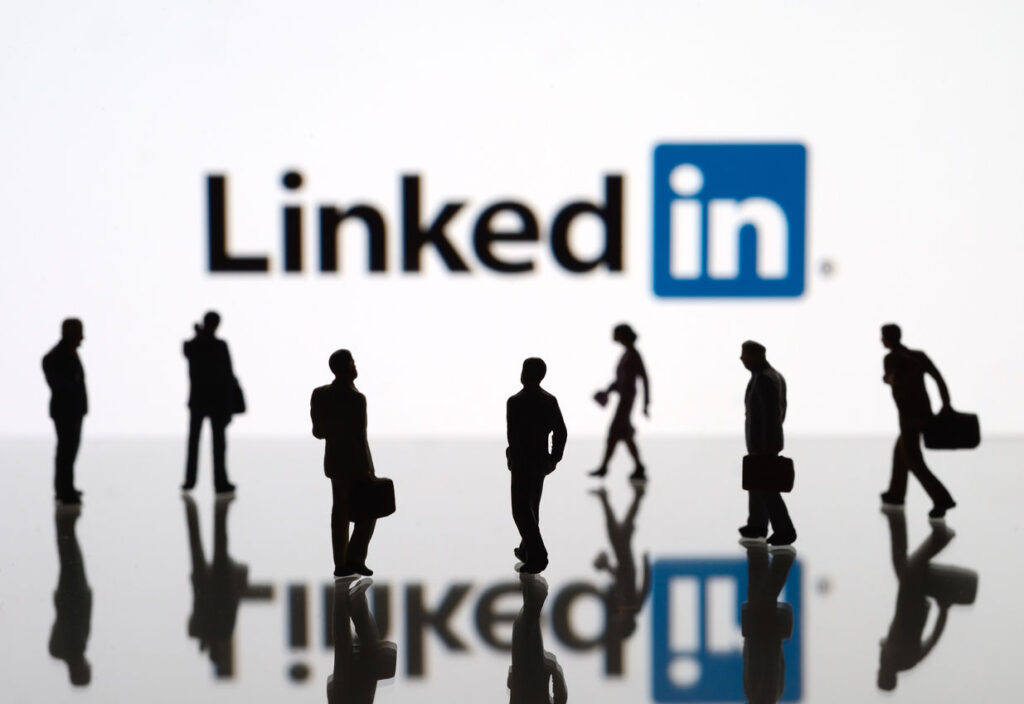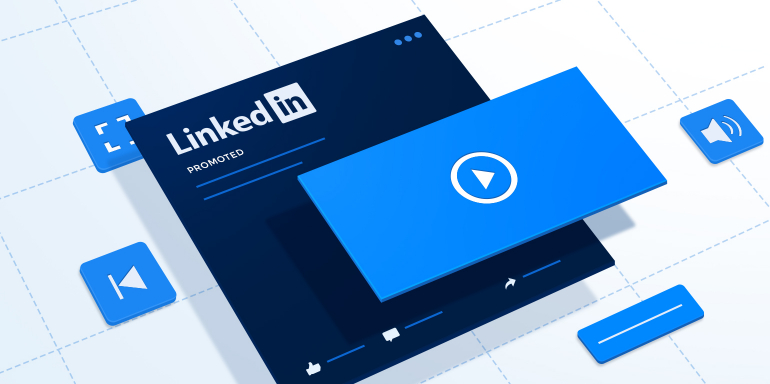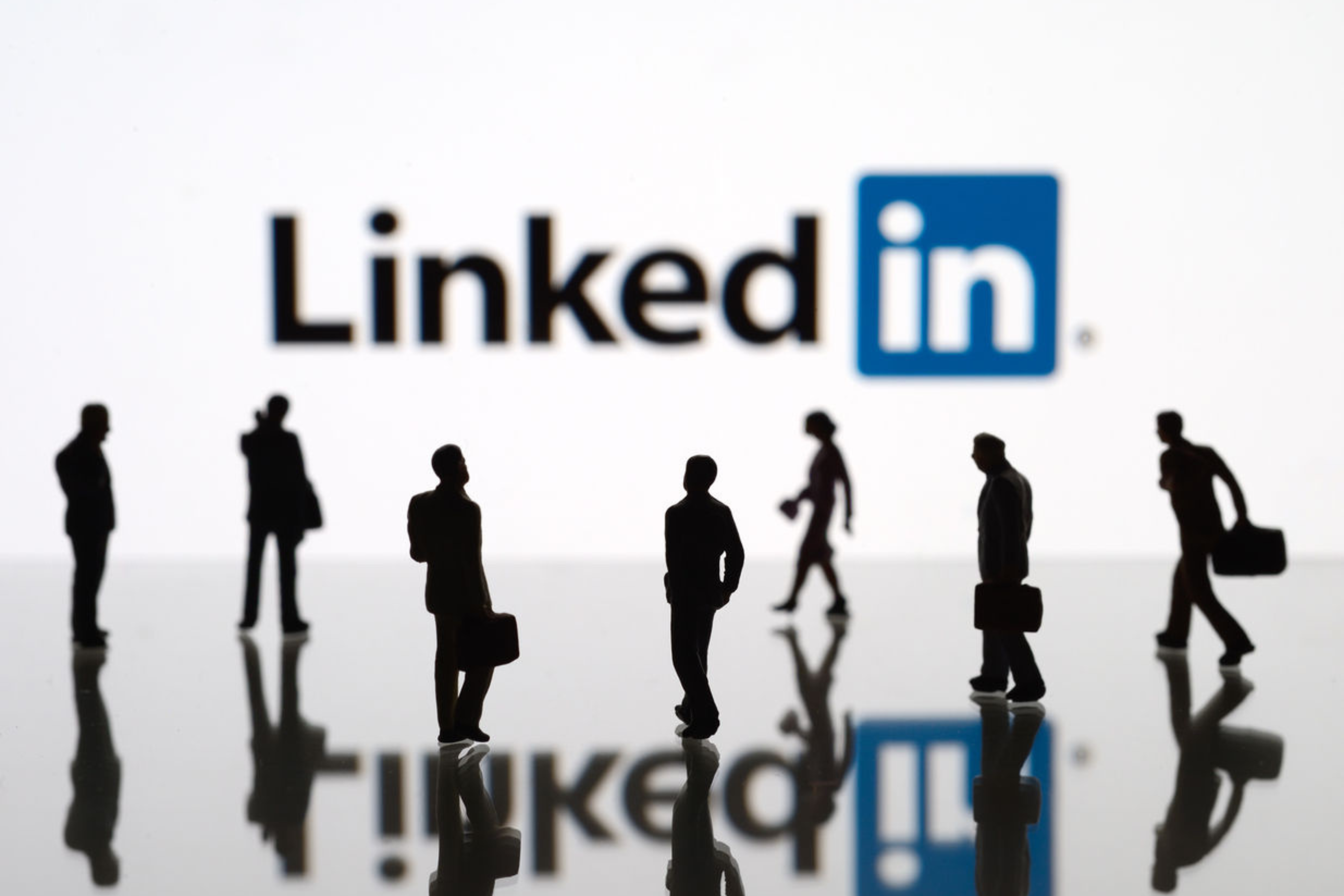Navigating social media can feel like a minefield. Especially, when you don’t have a plan in place. Even with a plan it can feel like you’re still not getting the results you want. This is where LinkedIn ads can help.
As part of our LinkedIn series, we’re exploring how LinkedIn ads can help your business. Being aware of LinkedIn ads, the different kinds and what you can expect will help you to weigh up whether they’re worth your time and money and set an advertising budget that works for you.
The first thing to understand is that not all LinkedIn ads are created equal, in fact the platform offers several different ad options so it can be tricky to know where to start.
Once again, the social media puffins have come to the rescue with a list of the different types of LinkedIn ads and how they work.

Sponsored content, or native ads, are ads that show up in your audiences’ LinkedIn feeds on both mobile and desktop devices. Usually carousel, video or image-based (we’ll get to those), sponsored content ads are labeled as ‘Promoted’ so audiences can differentiate them from other content.
Sponsored messaging, also known as conversation or message ads, directly advertise to members via their inboxes. These ads are designed to help you reach members of your target audience in a timely manner. However, it should be noted that LinkedIn strictly controls the number of times a member can receive Sponsored Messaging in a specific time frame so as to maintain the member experience.
Dynamic ads are personalised ads located in the right-rail on the home page. These ads are designed to speak directly to the member and use personal details found on the user’s profile, such as photo, name and job title. Dynamic ads are available in several formats: Follower ads, Spotlight ads and Job ads.
LinkedIn ad formats
In addition, LinkedIn offers 10 different ad formats so advertisers can create an ad campaign that helps them best meet their goals.
Carousel ads feature a series of swipeable images that can be used to share your brand’s story, showcase products or services or share insight. As these are visual ads it’s crucial to use compelling visuals that keep your reader engaged.
The point of a carousel ad is to raise brand awareness, foster engagement, generate leads and drive website visits and conversions.
Learn more about Carousel ads here.
Follower ads are a type of dynamic ad that promote your LinkedIn Page or Showcase pages to members to gain new followers. Follower ads raise awareness, boost website visits and encourage engagement.
Find out more about Follower ads here.
Spotlight ads highlight your business, services, products, content, jobs and direct members to your LinkedIn Page or website.
They are another type of dynamic ad that use personalisation to connect with audiences.
Spotlight ads aim to generate leads, raise brand awareness and engagement, and job applicants.
An overview of Spotlight ads can be found here.
Conversation ads, also known as sponsored messaging (see above), are designed to ‘spark immediate action’, foster personal connections with your audience and enable advertisers to encourage members to sign up to online events as well as showcase products, services. Members can also respond to the ad directly.
Similar to carousel ads, this kind of ad generates leads, encourages engagement, boosts website visits and conversions and raises brand awareness.
More information can be found about Conversation ads here.
Job ads, also known as Work With Us ads, offer up to 50% higher clickthrough rates than average recruitment ads and are designed to leverage employee networks and block competitors ads from showing up on your employees’ profiles.
Learn more about Job ads here.
Single job ads promote job opportunities directly into users’ news feeds and, according to LinkedIn, receive a 25% increase in the average click to reply rate.
Find out more about Single job ads here.
Lead generation forms, also known as lead gen forms, are aimed at businesses looking for qualified leads. Lead gen forms are customisable forms, prefilled with a prospect’s profile data, that can be applied to message ads and sponsored content. Lead gen forms help marketers collect high-quality leads ‘at scale’ and provide a simple way for companies to collect data.
Find an overview of Lead gen forms here.
Message ads let advertisers send a direct message with a call-to-action to their audiences’ inbox (see above). This kind of ad aims to generate leads and boost website visits and conversions, and, according to LinkedIn, more than 1 in 2 LinkedIn users open message ads, making them an attractive prospect for advertisers.
Learn more about Message ads here.
Text ads are LinkedIn’s pay-per-click/per-impression offering that generates leads and drives website traffic by targeting your ideal audience.
FInd out how to get started with Text ads here.
Video ads is LinkedIn’s most creative ad offering, giving advertisers the opportunity to show audiences their brand story, showcase new products and services, offer a behind-the-scenes glimpse at workplace culture and share thought leadership and think pieces.
Its main goal is to drive video views, however it can also drive more meaningful,
professional connections, grow brand awareness and loyalty.
Learn more about Video ads here
Single image ads appear in users’ feeds and look like regular content. They’re marked as ‘Promoted’ so audiences can differentiate them from other content and are designed to raise brand awareness, foster engagement, generate leads and drive website visits and conversions.
Learn more about Single image ads here
LinkedIn ad objectives
LinkedIn ad campaigns are built around three main objectives to help advertisers develop ad campaigns that meet specific business goals.
Awareness ads are impression-based campaigns that are designed to raise brand awareness and get audiences talking about your services or products. These kinds of ads also help businesses to grow their following, increase views and boost engagement.
Consideration ads are aimed at businesses wanting to qualify leads – a prospect identified as an ideal customer with the intent to buy – that are already familiar with their brand.
Consideration ads are designed to help advertisers gain more website visits, a more engaged audience and video views.
Conversion ads are for businesses that want to generate leads and make more sales. They can help advertisers gain LinkedIn leads, achieve website conversions or raise awareness for a job opening.

Struggling with your social media? At Charlie Puffin Digital, we create bespoke social media strategies and personalised content calendars. You retain full editorial control but can rest easy knowing that your content is being taken care of.
Drop us an email at hello@charliepuffindigital.co.uk or call 01462 558537 to book your FREE discovery call today.
